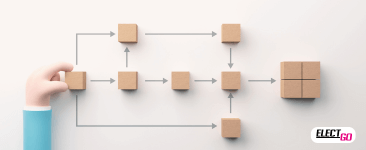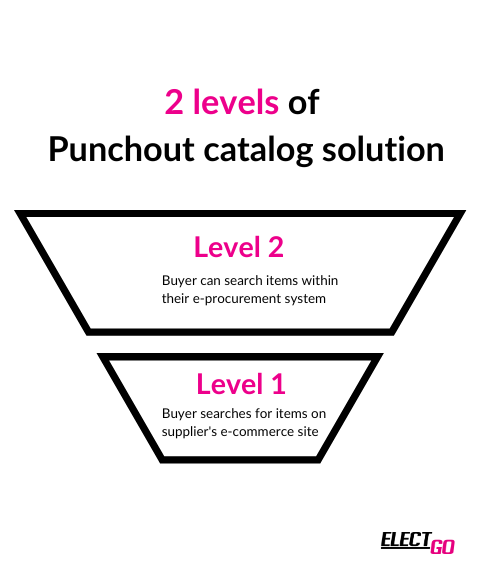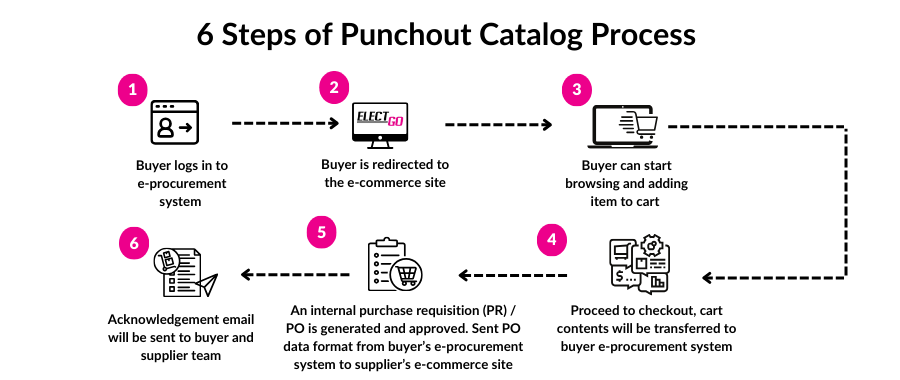Perbedaan Kontaktor dan Relay
The article is written by ElectGo team with contributions from Mr. Colin Koh, an industrial educator and industry leader in smart manufacturing and automation.


Perbedaan Kontaktor dan Relay
Kontaktor dan relay merupakan komponen penting dalam sistem kelistrikan yang berfungsi sebagai saklar untuk mengatur aliran daya. Meskipun keduanya memiliki fungsi dasar yang serupa, membedakan antara kontaktor dan relay bisa menjadi hal yang membingungkan. Keduanya digunakan untuk mengalihkan beban dan merupakan bagian dari rangkaian listrik yang merespons beban yang diterapkan. Memilih jenis saklar listrik yang salah untuk aplikasi tertentu dapat menyebabkan kerugian finansial yang signifikan dan kerusakan pada rangkaian listrik.
Pengertian Relay
Relay adalah komponen elektromekanis yang berfungsi sebagai saklar listrik otomatis. Relay digunakan untuk mengontrol aliran listrik dalam sirkuit dengan menggunakan sinyal kecil sebagai pemicunya. Biasanya, relay ditemukan dalam perangkat elektronik kecil atau sistem otomatisasi. Komponen utama relay meliputi elektromagnet untuk menghasilkan gaya magnet, kontak saklar yang terbuka atau tertutup, dan pegas yang mengembalikan kontak ke posisi semula saat sinyal listrik dihentikan. Relay sering digunakan dalam proteksi sistem listrik, kontrol motor pada sistem otomatisasi, sistem alarm, dan kendali jarak jauh pada perangkat listrik. Keunggulannya terletak pada kemampuannya mengendalikan beban arus besar dengan sinyal kecil, memberikan isolasi listrik, dan mudah diintegrasikan dalam sistem. Berbagai jenis relay, seperti relay elektromekanis, solid-state relay, dan timer relay, dirancang sesuai kebutuhan aplikasi tertentu. Pelajari lebih lanjut mengenai relay disini
Pengertian Kontaktor
Kontaktor adalah saklar listrik yang dirancang untuk menangani arus besar. Kontaktor digunakan secara luas di industri untuk mengontrol peralatan listrik seperti motor, sistem pencahayaan, dan beban berat lainnya. Kontaktor dirancang untuk membuka dan menutup rangkaian listrik secara otomatis menggunakan kendali listrik. Dapat digunakan pada sistem motor listrik, pencahayaan industri, pemanas, dan peralatan lainnya.
Perbedaan Kontaktor dan Relay
Kontaktor dirancang untuk bekerja pada arus dan tegangan yang lebih besar dibanding relay, serta memiliki daya tahan lebih tinggi untuk operasi yang intens. Perangkat ini sering digunakan dalam sistem kontrol otomatisasi, terutama untuk pengendalian motor listrik tiga fasa. Kontaktor juga dapat dilengkapi dengan aksesori seperti thermal overload relay untuk melindungi beban dari kerusakan akibat arus berlebih. Berikut perbedaan bersadarkan spesifikasinnya:
| Spesifikasi | Relay | Kontaktor |
| Tegangan Operasi | 5V - 240V AC/DC | 24V hingga 1000V AC/DC |
| Arus Maksimal | Hingga 15A | 16A hingga 1000A |
| Kapasitas Daya | Biasanya di bawah 2 kW | Mulai dari 2 kW hingga 100 kW |
| Tegangan Kumparan | 5V, 12V, 24V, atau 48V AC/DC | 24V, 48V, 110V, 220V AC/DC |
| Ukuran Fisik | Kecil dan ringan | Lebih besar dan berat |
| Ketahanan Mekanis | 1-10 juta siklus | 10-50 juta siklus (tergantung merek & tipe) |
| Ketahanan Listrik | Rendah, cocok untuk arus kecil | Tinggi, dirancang untuk arus besar |
| Aplikasi Utama | Elektronik kecil, switching sinyal, otomasi ringan | Motor listrik, beban induktif, dan sistem industri |
Memilih Antara Kontaktor dan Relay untuk Aplikasi Anda
Saat memilih antara kontaktor dan relay, ada beberapa pedoman umum yang dapat membantu menyederhanakan proses pengambilan keputusan. Berikut adalah aturan dasar kapan menggunakan masing-masing komponen:
Kapan Menggunakan Relay:
- Rating Arus: Cocok untuk aplikasi dengan arus 10A atau kurang.
- Tegangan: Umumnya digunakan untuk sirkuit yang beroperasi hingga 250VAC.
- Fase: Sesuai untuk aplikasi satu fase, seperti perangkat kecil, pengendalian pencahayaan, atau perangkat berdaya rendah.
Relay biasanya digunakan untuk switching sirkuit daya rendah dan ketika switching dilakukan tidak terlalu sering. Komponen ini sempurna untuk mengendalikan perangkat listrik kecil dan aplikasi dengan beban listrik ringan, seringkali digunakan dalam otomasi rumah atau sistem kendali.
Produk Relay
Kapan Menggunakan Kontaktor:
- Rating Arus: Lebih cocok untuk aplikasi dengan arus 10A atau lebih besar, terutama pada pengaturan industri dengan beban yang lebih besar.
- Tegangan: Kontaktor dirancang untuk menangani tegangan yang lebih tinggi, hingga 1000VAC.
- Fase: Sesuai untuk aplikasi satu fase maupun tiga fase, seperti pengendalian motor, sistem HVAC, atau peralatan industri yang lebih besar.
Kontaktor dirancang untuk menangani sirkuit daya tinggi dan lebih sering digunakan dalam aplikasi industri yang membutuhkan pengendalian daya besar atau switching yang lebih sering, seperti pengendalian motor atau mesin besar.
Produk Kontaktor


Sistem Proteksi Listrik
Digunakan dalam perangkat seperti circuit breaker untuk melindungi rangkaian listrik dari gangguan seperti arus lebih, hubung singkat, atau lonjakan tegangan.


Otomasi Industri
Relay sering digunakan untuk mengontrol mesin dan motor listrik dalam sistem otomatisasi pabrik.
Relay berfungsi sebagai penghubung antara sinyal kontrol (yang biasanya bertegangan rendah) dan perangkat operasional (yang biasanya bertegangan tinggi atau memiliki beban besar)


Enhanced data accuracy
Since data (e.g., product details, pricing, quantities) is automatically transferred between the supplier and buyer systems, errors caused by manual entry are virtually eliminated. This leads to more accurate order fulfillment and billing.


Enhanced data accuracy
Since data (e.g., product details, pricing, quantities) is automatically transferred between the supplier and buyer systems, errors caused by manual entry are virtually eliminated. This leads to more accurate order fulfillment and billing.


Cost efficiency
Eliminate redundant steps in the procurement process, reducing administrative costs associated with manual order entries and invoicing errors.
They also help avoid rogue spending by ensuring buyers stick to negotiated pricing.


Process streamlining
By integrating directly into e-procurement systems like SAP Ariba, Oracle, or Coupa, Punchout catalogs enable buyers to access product catalogs in a single, centralized platform.
The entire purchasing process—from item selection to order placement and invoicing—occurs in one continuous workflow.


Enhanced data accuracy
Since data (e.g., product details, pricing, quantities) is automatically transferred between the supplier and buyer systems, errors caused by manual entry are virtually eliminated. This leads to more accurate order fulfillment and billing.


Enhanced data accuracy
Since data (e.g., product details, pricing, quantities) is automatically transferred between the supplier and buyer systems, errors caused by manual entry are virtually eliminated. This leads to more accurate order fulfillment and billing.
What are the levels of the Punchout catalog solution?
There are 2 levels of punchout catalog:
Level 1 Punchout: Basic Punchout functionality where the buyer punches out to the supplier’s catalog and brings the cart data back into the procurement system. There is no product search capability within the buyer’s system. The buyer must enter the catalog before selecting items.
Level 2 Punchout: Enhances the buyer’s experience by allowing them to search for products from the supplier’s catalog directly from their procurement system. Once they find the desired product, they are then redirected to the Punchout catalog to complete the purchase.


What is the common Punchout catalog process?
There are 6 common steps of the Punchout catalog.
Please note that the punchout process may vary slightly depending on the level of punchout integration.


Step 1: Buyer logs into e-procurement system
The process begins with the buyer logging into their e-procurement system. This is where they manage and initiate procurement activities.
Step 2: The buyer is redirected to the supplier’s e-commerce site
From the e-procurement system, the buyer is seamlessly redirected to the supplier’s e-commerce site. This integration allows for a smooth transition without the need for separate login credentials.
Step 3: Buyer starts browsing and adding items to the cart
Once on the supplier’s e-commerce site, the buyer can browse the catalog, view product details, and add desired items to their shopping cart. This stage involves selecting products that meet their procurement needs.
Step 4: Proceed to checkout, cart contents are transferred to the buyer's e-procurement system
After finalizing the selection of items, the buyer proceeds to the checkout. At this point, the contents of the shopping cart are transferred back to the buyer's e-procurement system.
Step 5: Internal Purchase Requisition (PR) / Purchase Order (PO) generated and approved
Within the e-procurement system, an internal Purchase Requisition (PR) or Purchase Order (PO) is generated based on the cart contents. This PR/PO is then subject to the organization's approval workflow, ensuring that the procurement complies with internal policies and budget constraints. Once approved, the PO data is sent in the appropriate format from the buyer's e-procurement system to the supplier’s e-commerce site.
Step 6: Acknowledgement email sent to buyer and supplier team
Finally, an acknowledgment email is sent to both the buyer and the supplier team, confirming the receipt and processing of the order. This communication ensures that all parties are informed about the status of the procurement, facilitating transparency and coordination
Benefits of Punchout catalog for both buyers and suppliers
Benefits for buyers
![]()
Seamless procurement process
- Simplify the purchasing process by integrating directly with the buyer's e-procurement system.
- Reduce manual work and human error.
![]()
Real-time access to supplier data
- Access real-time data from suppliers, including up-to-date pricing and product availability.
- Improve the decision-making.
![]()
Compliance and control
- Adhere to internal procurement policies by restricting purchases to pre-approved suppliers, contracted pricing, and specific products.
- Ensure orders go through the proper channels for authorization before being processed.
![]()
Cost and time savings
- Time-saving by reducing the procurement process including placing and approving orders.
- Cost efficiency by reducing errors and adjustments.
![]()
Enhanced supplier relationships
- Provide buyers with direct access to trusted suppliers
- Buyers can access a tailored catalog that only includes contract-specific products and prices.
Benefits for suppliers
![]()
Increased business from larger buyer
Access to enterprise clients who rely on e-procurement systems like SAP, Oracle, or Coupa. By making procurement easier and more efficient helps to increase a loyal customer base.
![]()
Improved order accuracy
Automated data transfer helps reduce the chance of discrepancies or disputes between the supplier and buyer.
![]()
Faster order processing
Streamline order flow helps to ensure that orders are processed quickly and efficiently. It also helps to reduce administrative works.
![]()
Improved inventory management
With more accurate demand forecasting from real-time data, suppliers can better manage their inventory and supply chain, improving overall operational efficiency.
![]()
Increased customer satisfaction
Offer buyers a customized catalog that reflects negotiated prices, preferred products, and relevant promotions, ensuring a positive and personalized buying experience.
By providing real-time data can help to build trust from buyers.
What are the common challenges of the Punchout catalog?
Implementing a Punchout catalog can significantly streamline the procurement process for organizations, but it also comes with its own set of challenges. Here are some common challenges faced when implementing a Punchout catalog:
1. Integration complexity: Integrating Punchout catalogs with existing e-procurement systems can be technically complex. Organizations may face challenges in ensuring compatibility between different systems, which can lead to delays in implementation and require significant IT resources.
2. Supplier readiness: Not all suppliers may be equipped to support Punchout catalogs. Some suppliers may lack the necessary technology or expertise to create and maintain a Punchout catalog, which can limit the selection of suppliers available for Punchout integration.
3. User training and adoption: Employees may require training to effectively use the Punchout catalog. Resistance to change or a lack of familiarity with the new system can hinder adoption. Organizations need to invest in user training and support to facilitate a smooth transition.
4. Cost considerations: While Punchout catalogs can lead to cost savings in the long run, the initial setup and integration costs can be significant. SMEs may find it challenging to justify these costs, especially if the expected return on investment is not clearly defined.
By proactively planning for these challenges, organizations can maximize the advantages of Punchout catalogs and enhance their overall procurement efficiency.


Frequently Asked Questions (FAQs)
The main purpose of a Punchout catalog is to enable seamless and efficient procurement. With Punchout, purchasing teams can browse, select, and order products from a supplier without leaving their internal procurement software. The Punchout solution automatically updates product availability, pricing, and other relevant information, eliminating manual entry and reducing errors.
A Punchout catalog requires the following technical elements:
- Procurement system compatibility: The supplier's Punchout catalog must integrate with the buyer’s procurement system, such as SAP, Ariba, Oracle, or Coupa.
- Supported protocols: Punchout typically uses cXML (for Ariba and SAP systems) or OCI (for SAP systems).
- Secure access: Ensure that authentication methods like SSO or token-based authentication are set up to secure access for buyers.
- Real-time data integration: The catalog should provide real-time updates on product availability, pricing, and stock levels.
- Customization: The ability to tailor the catalog interface, pricing, and content to suit the buyer’s needs and requirements.
The buyer and supplier must work together to create a catalog that meets the buyer's purchasing needs. The supplier builds and hosts this catalog on their e-commerce website, designed specifically for integration with the buyer’s procurement platform.
Here's how the buyer and supplier collaborate:
- Requirement gathering: The buyer outlines their specific procurement requirements, including product categories, pricing structures, and any contract terms that need to be reflected in the Punchout catalog. The supplier needs to understand the buyer's preferences and procurement policies to build a suitable catalog.
- Catalog customization: The supplier builds a customized catalog on their e-commerce website. This catalog is specifically designed for Punchout, showing only the products, pricing, and availability negotiated in the buyer’s contract. The supplier ensures that the catalog can integrate with the buyer's procurement system through a compatible Punchout protocol (like cXML or OCI).
- Testing and integration: Both the buyer and supplier test the Punchout integration to ensure that when the buyer "punches out," they can browse, select, and transfer items to their internal procurement system seamlessly.
















Share this article on social media